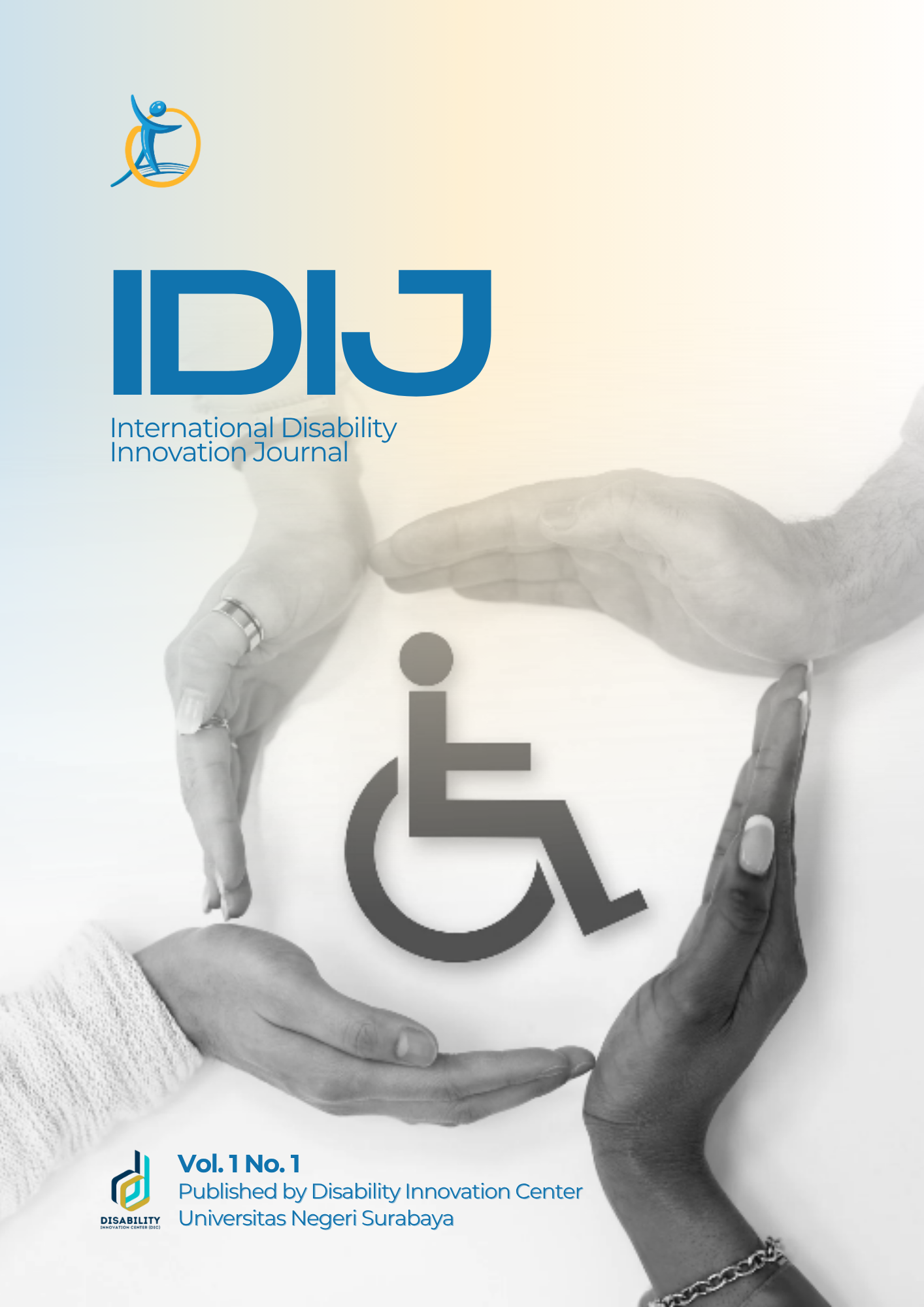The Application of Sound and Rhythm Perception Communication Training (BKPBI) in Improving the Language Skills of Deaf Children: A Case Study at an Inclusive School in Surabaya
Keywords:
Auditory and Rhythm Perception Development (BKPBI), neuroplasticity, inclusive education, auditory disability, multisensory therapyAbstract
Deaf children face significant challenges in language development due to limited auditory access, which is one of the fundamental aspects of the language learning process. This limitation not only affects their ability to speak and hear, but also has implications for their overall cognitive and social development. Without appropriate intervention, these children often struggle to communicate and interact with their surroundings, which can hinder their ability to function optimally in society. This article analyses the effectiveness of BKPBI (Language Management Skills Development through a Music and Rhythm-Based Approach), an innovative approach that utilises elements of music and rhythm to improve the language skills of deaf children. This method is noteworthy because it uses elements that may be more accessible to these children than traditional language learning methods, which often emphasise auditory components. The study involved 15 deaf children aged between 7 and 12 years old enrolled in three inclusive schools in Surabaya. Through a comprehensive qualitative research method, the researchers conducted direct observations, sound perception tests, and interviews with teachers and parents to collect in-depth and meaningful data. The results of this study showed a significant improvement of 80% in phonology, indicating that these children were better able to understand and produce language sounds. In addition, there was a 40% increase in vocabulary, which is an important indicator of language proficiency. Furthermore, these children also showed improvement in social interaction, which is crucial for developing the social skills needed in daily life. These findings provide strong support for integrating BKPBI into existing inclusive curricula in schools, with the hope that more deaf children will benefit from this approach. With government policy support encouraging the use of innovative methods in inclusive education, it is hoped that deaf children can overcome barriers in their language development and participate more actively in society. This research represents an important first step in efforts to improve the quality of education for deaf children and paves the way for further research in this field.
Downloads
Published
How to Cite
 Abstract views: 39
,
Abstract views: 39
, PDF Downloads: 54
PDF Downloads: 54






.png)
.png)
